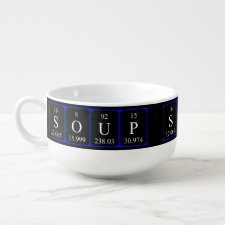
Authors: Luo J, Sun J, Huang J, Liu XY
Article Title: Preparation of water-compatible molecular imprinted conductive polyaniline nanoparticles using polymeric micelle as nanoreactor for enhanced paracetamol detection.
Publication date: 2016
Journal: Chemical Engineering Journal
Volume: 283
Page numbers: 1118-1126.
DOI: 10.1016/j.cej.2015.08.041
Alternative URL: http://www.sciencedirect.com/science/article/pii/S1385894715011237
Abstract: This paper reports the design and synthesis of a novel molecular imprinted conductive polyaniline (PANI) nanoparticles (NPs) using polymeric micelle as nanoreactor. In our strategy, an amphiphilic acrylic copolymer was firstly synthesized which self-assemble into micelles in aqueous solution. The aniline monomer and template molecules (paracetamol, PCM) were then immobilized into polymeric micelle owing to their interactions. The subsequent polymerization of aniline occurred within the micelle with the addition of ammonium persulfate (APS), leading to the formation of molecular imprinted PANI NPs. The resulting PANI NPs were characterized by various techniques, including Fourier transform infrared spectroscopy (FT-IR), thermal gravimetric analysis (TGA), and transmission electron microscopy (TEM). A highly sensitive and selective electrochemical sensor for detecting PCM was developed using the obtained molecular imprinted PANI NPs as recognition element. The obtained imprinted PANI sensor revealed not only high selectivity toward paracetamol, but also a wider linear range over paracetamol concentration from 0.4-100 μM and 200-1000 μM with a significantly lower detection limit of 50 nM, compared to previously reported PCM electrochemical sensors. The wide linear range was attributed to numerous effective recognition sites among the PANI matrix due to the large specific surface area of PANI NPs, whereas the low detection limit should be attributed to the electrical conductivity of PANI which provides a direct path for the conduction of electrons from the imprinting sites to the electrode surface. In addition, good stability and repeatability have also been demonstrated. This work not only provides a new type of paracetamol sensor with good performance, more importantly it develops a novel imprinting strategy to prepare molecular imprinted conductive nanoparticles in aqueous solution. In addition, considering the versatility of the amphiphilic copolymers, this strategy can be extended to imprint other molecules and thus prepare advanced MIP sensors for a wide range of templates
Template and target information: paracetamol, acetaminophen
Author keywords: molecular imprinting, nanoreactor, Polyaniline nanoparticles, Polymeric micelle



Join the Society for Molecular Imprinting

New items RSS feed
Sign-up for e-mail updates:
Choose between receiving an occasional newsletter or more frequent e-mail alerts.
Click here to go to the sign-up page.
Is your name elemental or peptidic? Enter your name and find out by clicking either of the buttons below!
Other products you may like:
 MIPdatabase
MIPdatabase









